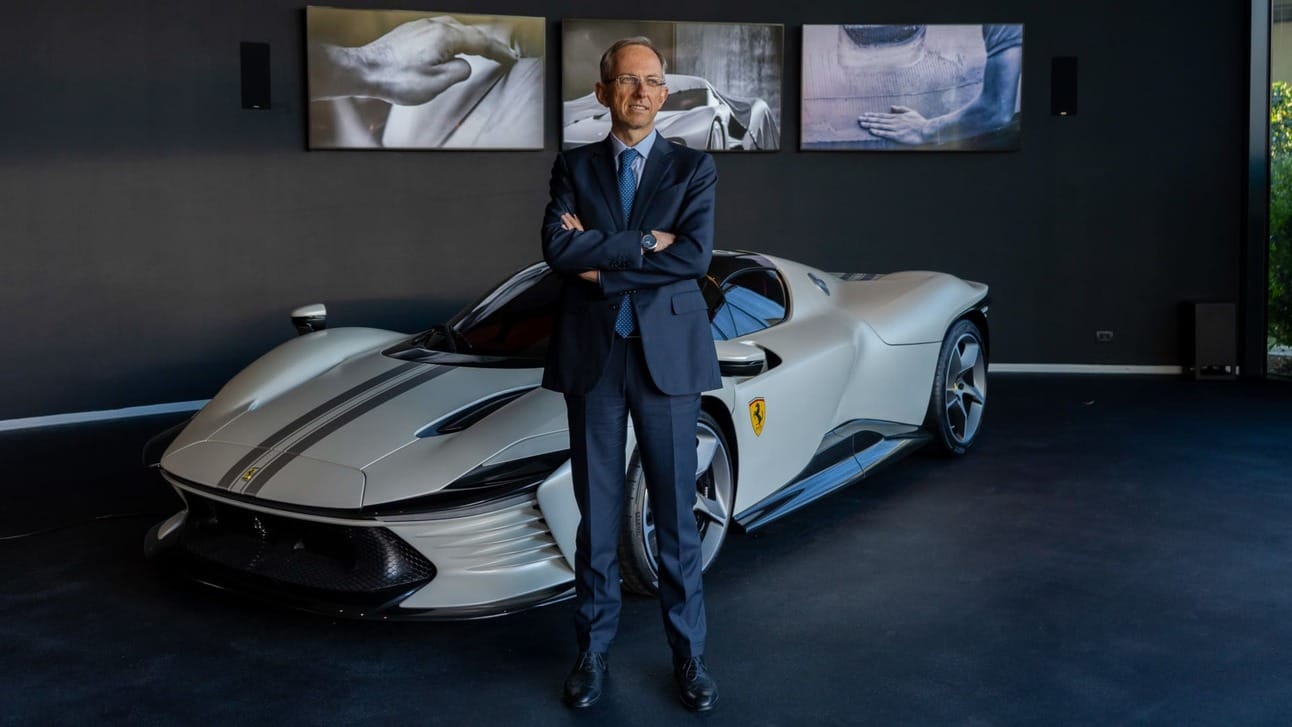
Receive Honest News Today
Join over 4 million Americans who start their day with 1440 – your daily digest for unbiased, fact-centric news. From politics to sports, we cover it all by analyzing over 100 sources. Our concise, 5-minute read lands in your inbox each morning at no cost. Experience news without the noise; let 1440 help you make up your own mind. Sign up now and invite your friends and family to be part of the informed.

Enzo Ferrari
Ferrari, a name synonymous with luxury, speed, and automotive excellence, has long been a dream car for enthusiasts and collectors alike. Founded in 1939 by Enzo Ferrari, the brand has become an icon in the automotive world. Ferrari's transition from a privately held company to a publicly traded entity was a significant milestone in its history. The decision to go public was about expanding its brand and attracting new capital while preserving the company’s exclusivity and legacy.

Ferrari IPO brings in $893 Million
Ferrari’s IPO in October 2015 marked a new era for the company. Historically, Ferrari had been a subsidiary of Fiat Chrysler Automobiles (FCA), but the decision was made to spin off Ferrari and list its shares on the New York Stock Exchange (NYSE). One of the primary reasons for going public was to unlock value. Fiat Chrysler, which owned a controlling stake in Ferrari, wanted to capitalize on Ferrari's immense brand equity. By separating Ferrari from FCA, both entities could pursue their growth strategies more effectively. Another reason for Ferrari's public debut was to access capital for expansion while maintaining its exclusive image. Unlike other automakers that might use the public offering to raise substantial funds for mass-market models, Ferrari’s IPO was aimed at fueling investments in its bespoke supercars, continuing research and development, and expanding into new markets, particularly in Asia.

Ferrari current stock price
Ferrari’s shares began trading under the ticker symbol “RACE” on the NYSE in October 2015. The company initially sold around 10% of its shares in the IPO, raising about $893 million. Even with its shares listed on the stock market, Ferrari made it clear that it would maintain a high degree of exclusivity. The IPO was structured so that Fiat Chrysler retained a controlling stake. Since the IPO, Ferrari has been a standout in the stock market. The company has built a reputation as a strong performer, delivering steady earnings, and continuing to maintain a relatively low production volume compared to other car manufacturers. This strategy has helped preserve its image as a manufacturer of high-end vehicles, with prices for its cars ranging from several hundred thousand to millions of dollars.

Estimated Ferrari production numbers by model
Since 2015, the brand has continued to thrive as a publicly traded company, with its stock performance consistently outperforming many traditional automakers. The company’s shift towards hybrid and electric vehicles, including the launch of the SF90 Stradale in 2019, marked a significant step toward embracing sustainability while maintaining high performance. Leadership changes, such as the passing of CEO Sergio Marchionne in 2018 and the appointment of Benedetto Vigna (CEO) in 2021, reflected Ferrari's adaptation to a rapidly changing industry. As the company looks ahead to the launch of its first all-electric model in 2025, Ferrari remains focused on innovation while staying true to its legacy of craftsmanship and speed.

Benedetto Vigna (CEO of Ferrari)
Despite its impressive growth, Ferrari’s journey as a publicly traded company hasn’t been entirely smooth. The company has been scrutinized for the limited number of cars it produces each year, leading to concerns about whether it can scale its operations to meet future growth. Another challenge for Ferrari has been its ability to balance exclusivity with the pressures of being a public company. As a publicly traded entity, there is always the demand for short-term results, which sometimes clashes with Ferrari’s long-term vision and its desire to stay true to its heritage.

Ferrari Shareholder split
Currently, Ferrari continues to thrive both as a brand and as a publicly traded company. Its stock has remained a popular choice for investors. Ferrari’s future, remains bright as it continues to drive forward into the future of automotive technology, all while maintaining the legacy that has made it one of the most iconic brands in the world.
Ferrari's equity ownership is split among several entities, with a notable portion held by institutional investors, the company’s management, and its parent company. Here's an overview of the major stakeholders in Ferrari's equity:
Exor N.V.: Exor, a holding company controlled by the Agnelli family (the same family that controls Fiat), is the largest shareholder of Ferrari. As of recent reports, Exor holds about 24% of Ferrari's equity. Exor also plays a significant role in corporate governance and strategic decision-making.
Public Shares: Ferrari's stock is publicly traded on the New York Stock Exchange (NYSE) and the Borsa Italiana in Milan. The remaining shares are owned by various institutional investors, hedge funds, and individual shareholders. After Exor's holding, around 66% of the company’s equity is publicly traded in the form of common stock.
Management and Employees: A smaller portion of Ferrari's shares (usually less than 10%) is held by its management and employees. This is part of the company’s employee stock ownership programs and incentives, though it represents a minor percentage compared to Exor’s and the public shares.
The ownership breakdown can shift slightly due to stock buybacks, secondary offerings, or changes in the public shareholding. Ferrari's structure is quite unique, with a significant portion of the equity remaining with the Agnelli family through Exor, which allows them to maintain substantial influence over the company's decisions while benefiting from Ferrari’s growth and profitability.

